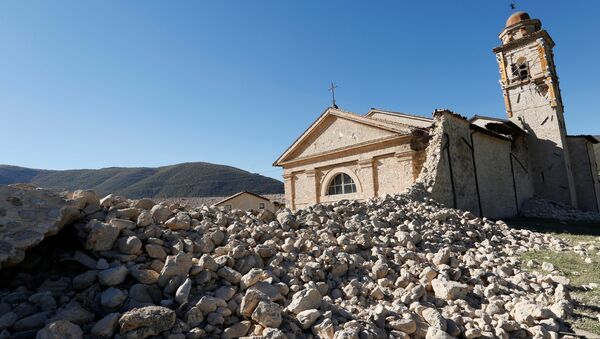No deaths have so far been reported, but civil protection services are checking whether there are any casualties. According to the European-Mediterranean Seismological Centre the magnitude of the Sunday morning earthquake was 6.5.
"There was uncertainty at the beginning: some agencies were giving 6.1, others — even 7.1. So at the end the consensus was 6.5," Valensise told Sputnik.
The epicenter of the earthquake was located between the cities of Perugia and Macerata. However, the tremor was powerful enough to wake some of the residents of Rome, which is located about 130 kilometers (80 miles) away from the epicenter of the shake.
"The earthquake happened about 130 kilometers north of Rome, this is why it was felt so heavily in Rome. Many people are frightened, but there was no damage," the expert said.
Replying to the question of whether there was some statistical data on possible future earthquakes of that kind, Valensise said that more earthquakes are quite likely to take place at any time in the near future.
According to him, it is impossible to predict where and when an earthquake will occur.
"We know that there are many vulnerable cities and villages in the country, especially in the center and in the south. But there is no way of telling when the next one's gonna strike," the expert said.
Valensise also noted that following another devastating earthquake in August 2016 the Italian government worked out a project, which provides for building new houses safe from future earthquakes. However, the project is very expensive and implementation may take decades.



